- Regulatory Status
- RUO
- Other Names
- Dickkopf-related protein 1, DKK1
- Ave. Rating
- Submit a Review
- Product Citations
- publications
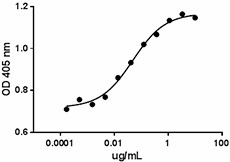
-

Recombinant Mouse DKK-1 enhances BMP9 induced alkaline phosphatase production in MC3T3-E1 cells with EC50 of 15 - 60 ng/mL.
| Cat # | Size | Price | Quantity Check Availability | Save | ||
|---|---|---|---|---|---|---|
| 759602 | 10 µg | $147 | ||||
| 759604 | 25 µg | $276 | ||||
DKK-1 (Dickkopf related protein 1) is a member of the Dickkopf family of proteins that include DKK-1, -2, -3,-4, and Soggy. DKK-1 was discovered by its ability to block Wnt signaling during early Xenopus embryogenesis. DKK-1 antagonizes canonical Wnt signaling by inhibiting LRP5/6 interaction with Wnt proteins. DKK-1 forms ternary complex with LRP5/6 and the transmembane protein Kremen1/2, promoting internalization of LRP5/6 and down regulation of Wnt signaling. DKK-1 contains two conserved cysteine-rich domains separated by a linker region. N-terminal cysteine-rich domain is unique to DKKs while C-terminal cysteine-rich domain has a pattern of 10 cysteines similar to colipase fold. DKK-1 binds with LRP6 with high affinity and this interaction is enhanced by Kremens. The interactions between DKK-1 and both LRP6 and Kremens are mediated via C-terminal cysteine-rich domain. DKKs are expressed throughout development and play important role by locally inhibiting Wnt regulated processes such as limb development, somitogenesis, antero-posterior axial patterning, and eye formation. In the adult, DKKs are implicated in bone formation and bone disease, cancer and Alzheimer disease. The balance between Wnt signaling and DKK-1 inhibition is important for bone homeostasis. Increased expressions of DKK-1 are found in lung cancers, esophageal squamous cell carcinomas, and hormone-resistant breast cancers. DKK-1 expression is decreased in malignant melanoma and colorectal cancers. DKK-1 has been shown to partially abrogate Wnt3a dependent inhibtion of alkaline phosphase production in BMP2 stimulated osteoprogenitors.
Product DetailsProduct Details
- Source
- Mouse DKK-1, amino acids Ser30-His272 (Accession# BC050189) was expressed in 293E cells.
- Molecular Mass
- The 243 amino acid recombinant protein has a predicted molecular mass of approximately 26.1 kD. The DTT-reduced protein migrate at approximately 35-45 kD and non-reduced protein migrate at approximately 30-40 kD by SDS-PAGE. The predicted N-terminal amino acid is Ser.
- Purity
- >95% as determined by Coomassie stained SDS-PAGE.
- Formulation
- 0.22 µm filtered protein solution is in PBS, pH 7.2.
- Endotoxin Level
- Less than 0.1 EU per µg of protein as determined by the LAL method.
- Concentration
- 10 and 25 µg sizes are bottled at 200 µg/mL.
- Storage & Handling
- Unopened vial can be stored between 2°C and 8°C for up to 2 weeks, at -20°C for up to six months, or at -70°C or colder until the expiration date. For maximum results, quick spin vial prior to opening. The protein can be aliquoted and stored at -20°C or colder. Stock solutions can also be prepared at 50 - 100 µg/mL in appropriate sterile buffer, carrier protein such as 0.2 - 1% BSA or HSA can be added when preparing the stock solution. Aliquots can be stored between 2°C and 8°C for up to one week and stored at -20°C or colder for up to 3 months. Avoid repeated freeze/thaw cycles.
- Activity
- ED50 = 15 - 60 ng/mL as measured by its ability to enhance BMP9 induced alkaline phosphatase production in MC3T3-E1 cells.
- Recommended Usage
-
Bioassay
- Application Notes
-
BioLegend carrier-free recombinant proteins provided in liquid format are shipped on blue-ice. Our comparison testing data indicates that when handled and stored as recommended, the liquid format has equal or better stability and shelf-life compared to commercially available lyophilized proteins after reconstitution. Our liquid proteins are verified in-house to maintain activity after shipping on blue ice and are backed by our 100% satisfaction guarantee. If you have any concerns, contact us at tech@biolegend.com.
- Additional Product Notes
-
View more applications data for this product in our Scientific Poster Library.
- Product Citations
-
Antigen Details
- Distribution
-
Placenta, prostate, colon, spleen, and platelets.
- Function
- Wnt antagonist implicated in bone formation and bone disease, cancer and Alzheimer disease. Also promotes type 2 cell-mediated inflammation.
- Ligand/Receptor
- LRP5/6, Kremen-1, and Kremen-2.
- Bioactivity
- Measured by its ability to enhance BMP9 induced alkaline phosphatase production in MC3T3-E1 cells.
- Cell Type
- Embryonic Stem Cells
- Biology Area
- Stem Cells, Cancer Biomarkers, Neuroscience, Neuroinflammation
- Antigen References
-
1. Fedi P, et al. 1999. J. Biol. Chem. 274:19465-72.
2. Krupnik VE, et al. 1999. Gene. 238:301-13.
3. Mao B, et al. 2001. Nature. 411:321-325.
4. Mukhopadhyay M, et al. 2001. Dev. Cell. 1:423-434.
5. Tian E, et al. 2003. New Eng. J. Med. 349:2483-2494.
6. Niehrs C. 2006. Oncogene. 25:7469-7481.
7. Diarra D, et al. 2007. Nature Med. 12:156-163.
8. Fujita K, Janz S. 2007. Molecular Cancer 6:71.
9. Ahn VE, et al. 2011. Dev. Cell 21:862-873. - Gene ID
- 13380 View all products for this Gene ID
- UniProt
- View information about DKK-1 on UniProt.org
Related FAQs
- Why choose BioLegend recombinant proteins?
-
• Each lot of product is quality-tested for bioactivity as indicated on the data sheet.
• Greater than 95% Purity or higher, tested on every lot of product.
• 100% Satisfaction Guarantee for quality performance, stability, and consistency.
• Ready-to-use liquid format saves time and reduces challenges associated with reconstitution.
• Bulk and customization available. Contact us.
• Learn more about our Recombinant Proteins. - How does the activity of your recombinant proteins compare to competitors?
-
We quality control each and every lot of recombinant protein. Not only do we check its bioactivity, but we also compare it against other commercially available recombinant proteins. We make sure each recombinant protein’s activity is at least as good as or better than the competition’s. In order to provide you with the best possible product, we ensure that our testing process is rigorous and thorough. If you’re curious and eager to make the switch to BioLegend recombinants, contact your sales representative today!
- What is the specific activity or ED50 of my recombinant protein?
-
The specific activity range of the protein is indicated on the product datasheets. Because the exact activity values on a per unit basis can largely fluctuate depending on a number of factors, including the nature of the assay, cell density, age of cells/passage number, culture media used, and end user technique, the specific activity is best defined as a range and we guarantee the specific activity of all our lots will be within the range indicated on the datasheet. Please note this only applies to recombinants labeled for use in bioassays. ELISA standard recombinant proteins are not recommended for bioassay usage as they are not tested for these applications.
- Have your recombinants been tested for stability?
-
Our testing shows that the recombinant proteins are able to withstand room temperature for a week without losing activity. In addition the recombinant proteins were also found to withstand four cycles of freeze and thaw without losing activity.
- Does specific activity of a recombinant protein vary between lots?
-
Specific activity will vary for each lot and for the type of experiment that is done to validate it, but all passed lots will have activity within the established ED50 range for the product and we guarantee that our products will have lot-to-lot consistency. Please conduct an experiment-specific validation to find the optimal ED50 for your system.
- How do you convert activity as an ED50 in ng/ml to a specific activity in Units/mg?
-
Use formula Specific activity (Units/mg) = 10^6/ ED50 (ng/mL)
 Login/Register
Login/Register 





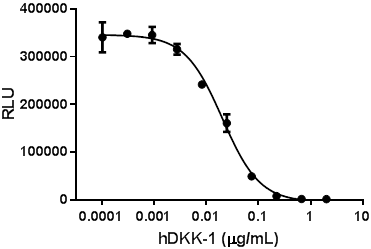
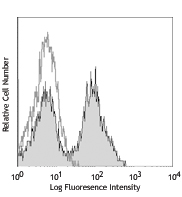
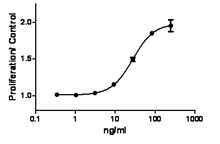
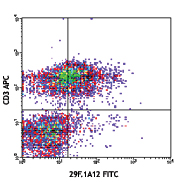



Follow Us